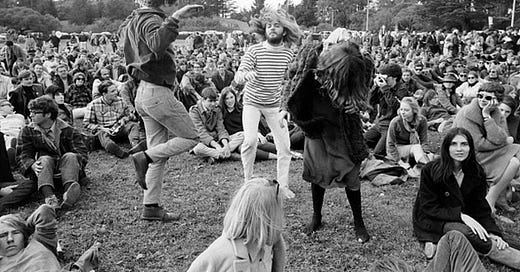Are Baby Boomers One Generation or Two?
The baby boom generation is considered to include everyone born from 1946 through 1964, a total 19 years. The subsequent generations stretch over somewhat fewer years. Generation X (1965-1980) and the millennial generation (1981-1996) both include 16 years of births, and generation Z (1996-2010) 15 years — not a big a difference in length of time, but perhaps enough of to be significant.
The baby boom and baby boomers are defined not so much by their life and cultural experiences but by the numbers born, exceeding four million a year in the mid to late 1950s. We did not again break the four million mark until 1989 when the U.S population was much larger, 161 million in 1955 as compared to 250 million in 1990. And we didn’t match the high water mark of 4.3 million births in 1957 for 50 years, until 2007 when the U.S. population was almost twice as large. (The number of births have fallen to fewer than four million a year since then.)
Real Life Differences
All of this is to say that the baby boom was real, but it tells us nothing about the life experience of baby boomers. The reality is that the world of those born in 1946 at the beginning of the baby boom was vastly different from that of those born in 1964. The older baby boomers were more likely to be the children of World War II veterans and to have faced the Vietnam War draft themselves. They went to Woodstock; the younger baby boomers just listened to the music and wished they could have attended. The older baby boomers were much cooler than their younger brothers and sisters.
The younger baby boomers came of age after the Vietnam War ended and some felt that they missed the opening up of the sexual revolution and the music of the 60s. They, instead, faced Watergate and the stagflation of late 70s. People feel mortgage rates are high now, but they exceeded 12 percent in the mid-80s when many of these later boomers were buying or hoping to buy their first homes.
At least some older baby boomers participated in the civil rights movement or dropped out and became hippies. Younger baby boomers gave us the Official Preppy Handbook.
Generation Jones
Television director and producer Jonathan Pontell has suggested dividing baby boomers into two groups, “leading-edge” baby boomers born from 1946 to 1953 and “Generation Jones” born from 1954 to 1965. He calls the later baby boomers generation Jones because this group felt a strong “keeping up with the Joneses” competitiveness as they responded to a more restrictive economic world in terms of employment opportunities.
Presidents Bill Clinton, Donald Trump, and George W. Bush are early baby boomers, all having been born in 1946. Barack Obama, born 15 years later in 1961, is a member of generation Jones. (President Joe Biden is too old to be a baby boomer, having been born in 1942, when there were just 2.8 million babies born. Interestingly, according to a New York Times article at the time, this actually set a record, exceeding the prior highest number of births of 2.6 million in 1921.)
What About the Future?
But what does this mean for us today? One answer is that at this moment leading edge baby boomers and generation Jonesers are actually in very different situations with respect to work and retirement. The older group, as defined by Pontell, ranges in age from 70 to 77 and the younger cohort from 58 to 69. About 15% of Americans in their 70s are still working as compared to 32% of those in their 60s. (Given the facts that few baby boomers have enough money for retirement, post-Covid 19 we don’t have enough workers, and the health benefits of work provided by socialization and purpose, they would all be advised to work as long as possible.)
The leading edge boomers are also likely to become the bleeding edge in about a decade when they make it to their late 80s, the age when people are more likely to need assistance, and face our fractured elder care system. As I’ve commented before, we are now in a pre-baby boom trough in terms of the number of older seniors in the nation, since few babies were being born between 1921 and 1942. Leading edge baby boomers and their families will have to grapple with our lack of preparation for the huge need for elder care that will start in 2030.
By the time generation Jones gets to the same stage in life, beginning in 2040, federal and state governments may have reacted to the coming crisis and developed better systems for meeting the need. If that proves to be the case, the life experiences of leading edge baby boomers and generation Jonesers will continue to be very different.



